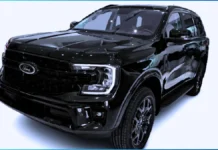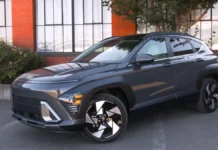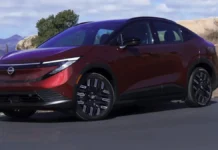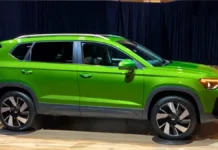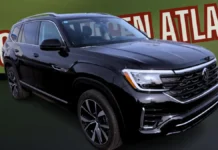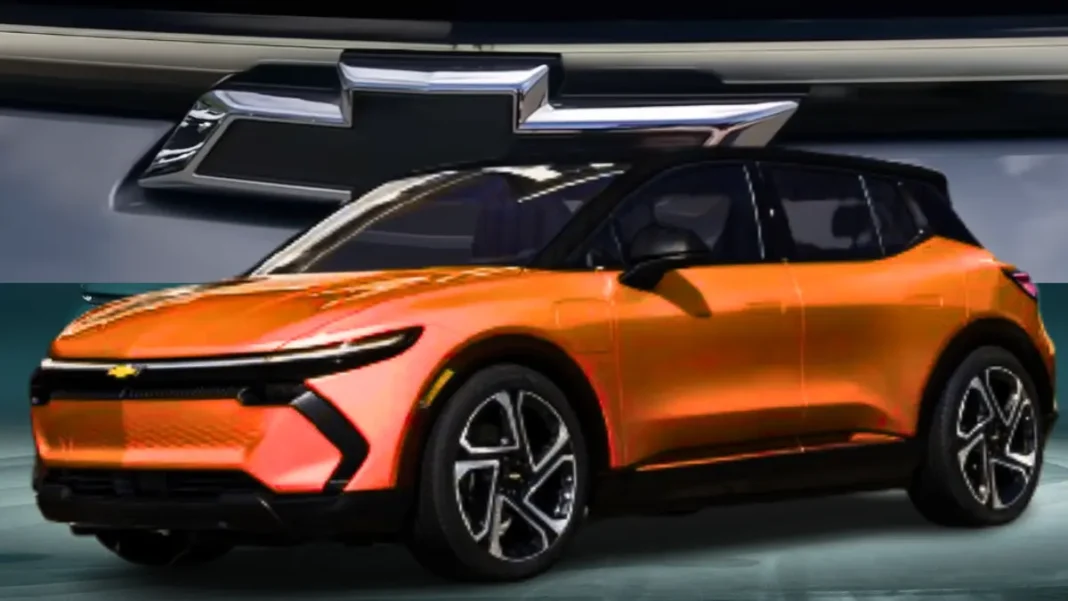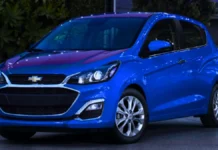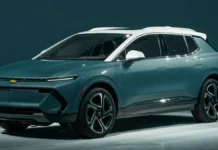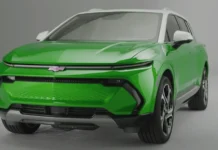The Chevy Bolt electric car is making a dramatic return in the U.S. market. In this 2025 U.S. guide, we’ll dive into its specs, U.S.-specific incentives, charging options, ownership costs, pros & cons, comparisons, and how it fits into America’s electric vehicle (EV) landscape.
Table of contents
- Back in the U.S.: The Bolt’s Comeback
- Specs & Features of the 2027 Bolt
- U.S. Charging Landscape & Practical Use
- U.S. Cost & Ownership Considerations
- Pros & Cons for U.S. Buyers
- U.S. Comparisons & Alternatives
- Tips & Best Practices for U.S. Owners
- Is It Worth It in the U.S.?
- Post You May Find Useful
- Chevy Bolt electric car FAQs
Back in the U.S.: The Bolt’s Comeback
Chevrolet’s decision to revive the Bolt stems from strong demand and the need for a more affordable electric car in America. The new model drops the “EV/EUV” suffix and leans toward a crossover-like body, aligning with current U.S. market tastes.
Unlike the previous generation, the 2027 Bolt will be built on GM’s latest EV architecture and will be marketed in the U.S. as a compelling value option. Wikipédia
Specs & Features of the 2027 Bolt
Battery, Range & Power
- A 65 kWh LFP (lithium-iron-phosphate) battery is used.
- GM projects an EPA‑estimated range of about 255 miles (≈ 410 km).
- The motor delivers 210 horsepower (shared with the Equinox EV’s drive unit).
This gives American drivers a balance of performance and efficiency in typical U.S. driving conditions.
Charging & U.S. Infrastructure
- DC fast charging capability is 150 kW, allowing 10% to 80% in about 26 minutes under ideal conditions.
- The Chevy Bolt electric car now uses a native NACS port (Tesla’s standard), which opens access to the Tesla Supercharger network in the U.S. without an adapter.
- GM will include or provide an adapter for legacy CCS chargers so Bolt owners can still use existing DC fast chargers.
- Vehicle‑to‑Home (V2H) or bidirectional charging is supported (with compatible home systems).
- Plug‑and‑charge will be supported (initially via EVgo), simplifying the public charging experience. Car and Driver
These features make the Bolt more U.S.-friendly, especially for those who travel interstate or rely on public fast chargers.
U.S. Trim Levels & Pricing
- Launch trim LT (with included destination charge) starts at $29,990 in the U.S.
- A more affordable LT version later in the year is priced at $28,995 including destination.
- The RS trim will arrive later in the cycle, with sportier styling and additional features.
GM says the Bolt will be a limited-run model in the U.S., so availability may be constrained.
Production will occur in Fairfax, Kansas City, Kansas.
Interior, Technology & Safety (U.S.)
- An 11.3‑inch infotainment screen + 11.0‑inch digital gauge display are standard.
- The system is built on Google Built‑In (no Apple CarPlay / Android Auto) for navigation, apps, and voice control.
- Over 20 safety and driver assistance features such as lane keep assist, automatic braking, intersection collision mitigation, blind spot alerts, etc.
- Super Cruise, GM’s hands‑free driving system with automatic lane change, will be optional or available on higher trims. Car and Driver
U.S. Charging Landscape & Practical Use
U.S. Charging Infrastructure
In the U.S., Tesla’s Supercharger network has broad coverage nationally. With the Bolt’s native NACS port, owners gain seamless Supercharger access — a major advantage over many rival EVs.
However, not all public DC fast chargers in the U.S. use NACS — many older ones still use CCS. That’s why having an adapter is key to maximizing charger access.
Because GM includes plug‑and‑charge, the payment and authentication is automatic at compatible chargers (such as EVgo) — reducing friction for U.S. users.
Battery preconditioning (warming or preparing the pack) will help in U.S. conditions (hot or cold) to improve charging speed on DC fast sessions.
Real U.S. Charging Times & Use
n ideal 150 kW DC fast setup can take the Chevy Bolt electric car from 10% to 80% in about 26 minutes. In real U.S. usage, factors such as temperature, charger condition, battery state, and grid conditions influence actual times.
Most U.S. EV drivers charge at home. Given the average American drives ~42 miles/day, the Bolt’s 255-mile range means a full charge covers many days of commuting. news.gm
In rural or less densely populated U.S. regions, charger availability is uneven. Having access to Superchargers and a good adapter is especially useful for U.S. cross‑country trips.
U.S. Cost & Ownership Considerations
Electricity / Charging Cost in the U.S.
In the U.S., residential electricity rates vary by state — typically between $0.10 to $0.25 per kWh. Taking a mid‑range rate of $0.15/kWh:
- A full 65 kWh charge costs about $9.75
- At 255 miles of range, that translates to ~3.8¢ per mile (excluding charging losses)
These estimates depend heavily on local utility rates, time-of-use programs, and energy efficiency.
Maintenance, Warranty & Reliability
EVs generally cost less to maintain in the U.S. than internal combustion vehicles — no oil changes, fewer moving parts, etc.
GM typically offers an 8-year / 100,000-mile battery warranty in the U.S. for its EVs (check specific terms for the Bolt).
Because the new Chevy Bolt electric car uses LFP chemistry (less prone to degradation under full charge), U.S. owners may enjoy fewer concerns about battery health over time.
Federal & State Incentives (U.S.)
As of 2025, the federal EV tax credit (up to $7,500) has expired unless refreshed legislation is passed. This means buyers currently will not benefit from it for new EVs (including the Bolt) under current law. Reuters
However, many U.S. states, utility programs, or local governments still offer incentives, rebates, or credits for buying EVs or installing home charging equipment. These vary widely by state (California, New York, etc.).
Other costs to consider for U.S. owners:
- Home charger installation costs
- Insurance, which may be higher for EVs due to battery replacement risks
- Depreciation / resale (influenced by battery health, EV market trends)
- Service network availability, especially in less-served U.S. regions
Pros & Cons for U.S. Buyers
Pros
- Value pricing: Many U.S. EVs with 200+ miles range far exceed $30,000
- Access to Tesla Superchargers via native NACS — major advantage for U.S. highway travel
- Fast charging (150 kW) and plug‑and‑charge make public charging more convenient
- Advanced features: Super Cruise, V2H, Google Built‑In
- Lower maintenance burden as an EV in U.S. ownership context
Cons / Challenges
- No federal tax credit currently, which weakens the financial incentive
- Range is good but not class‑leading compared to some U.S. rivals
- Limited-run availability may restrict early U.S. availability or dealer support
- Infrastructure gaps in rural or underserved U.S. areas
- Lack of CarPlay / Android Auto support may disappoint some U.S. customers
- Battery and parts support might be slower in regions where Chevy EV presence is minimal
U.S. Comparisons & Alternatives
| Competitor | U.S. Range / Highlights | Where Bolt Wins | Where It Trails |
|---|---|---|---|
| Tesla Model 3 | ~300+ miles | Lower cost, access to Superchargers without extra cost | More range, brand / network strength |
| Nissan Leaf | 200–250 miles (depending on variant) | Faster charging, better tech features | More established infrastructure in some areas |
| Hyundai / Kia EVs | 250–350+ miles | Simpler & more affordable entry option | Higher price, fewer built-in Tesla network features |
In the U.S., access to Superchargers gives the Chevy Bolt electric car an edge on long-distance usability compared to many non‑Tesla EVs (even if those EVs have slightly higher range).
Tips & Best Practices for U.S. Owners
- Use route-planning tools that integrate U.S. charger maps (especially Tesla/Supercharger networks)
- Optimize range via regenerative braking, efficient speed, and preconditioning
- Take advantage of off-peak (cheaper) charging if your utility offers time-of-use rates
- Keep your battery between ~10% and 90% for day-to-day use; full 100% charges for long trips
- Verify that local Chevy dealers offer EV service and have parts
- Monitor state and local incentives in your area for home charger rebates, utility credits, etc.
Is It Worth It in the U.S.?
For many U.S. drivers, the Chevy Bolt electric car offers an outstanding value proposition. Its combination of range, charging flexibility (thanks to NACS), advanced features, and competitive price makes it a strong contender in the U.S. EV landscape.
Its drawbacks (lack of current federal credit, limited production, range not leading) are real, but for many users — especially those who do not need ultra‑long range daily — the Bolt may hit the sweet spot.
If you’re in a U.S. market, it’s wise to:
- Confirm local dealer availability
- Map the Supercharger / DC fast charger network along your regular routes
- Compare total cost (electricity, insurance, incentives) versus similarly priced ICE or hybrid vehicles
Post You May Find Useful
- 2025 Chevrolet Blazer EV
- The 2024 Chevrolet Corvette Stingray
- 2025 Chevrolet Camaro ZT1
- 2024 Chevrolet Camaro ZL1
- Chevy Electric Cars
Chevy Bolt electric car FAQs
Q1. What is the 2027 Chevy Bolt electric car’s range on a full charge?
A: The 2027 Chevy Bolt uses a 65 kWh LFP battery and is estimated by GM to deliver about 255 miles (≈ 410 km) of EPA‑equivalent range.
Q2. How fast does the 2027 Chevy Bolt charge (10% → 80%)?
A: Under ideal conditions, the Bolt’s DC fast charging system (150 kW peak) can take it from 10% to 80% in around 26 minutes.
Q3. Does the 2027 Bolt support Tesla Superchargers?
A: Yes — it has a native NACS port, which lets it plug directly into Tesla’s Supercharger network (in regions where that network is accessible) without needing an adapter. GM News
For legacy CCS chargers, GM intends to provide an adapter to maintain broad charging compatibility.
Q4. What is the starting price of the 2027 Chevy Bolt in the U.S.?
A: The initial 2027 Bolt LT (with destination charge) is priced at $29,990. GM News
Later in the model year, a more basic LT trim may be offered at $28,995 (including destination). GM News
Q5. What warranty coverage does the Chevy Bolt electric car’s battery or EV components have?
A: The battery has an 8‑year / 100,000‑mile limited warranty (standard for many GM EVs) for defects and capacity loss. GM News
Other EV components are typically covered under GM’s EV / component warranties; always check current official warranty documentation at purchase.

